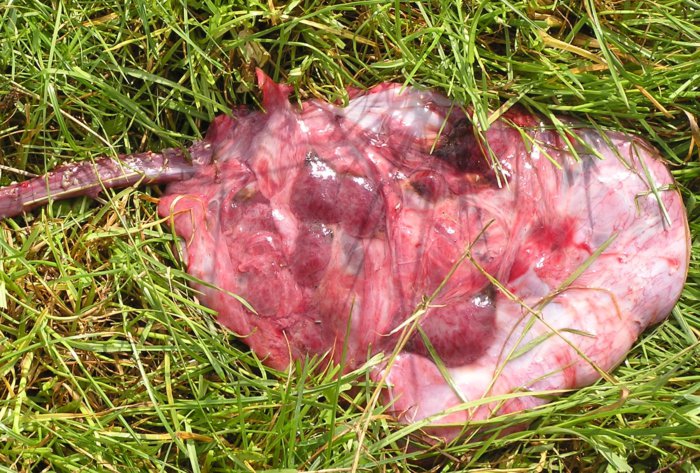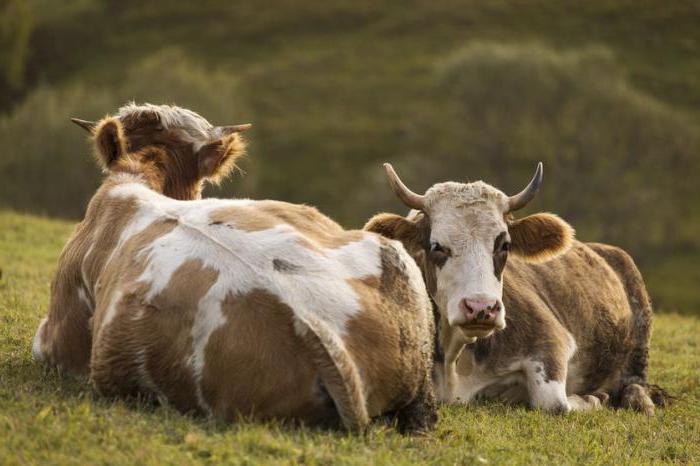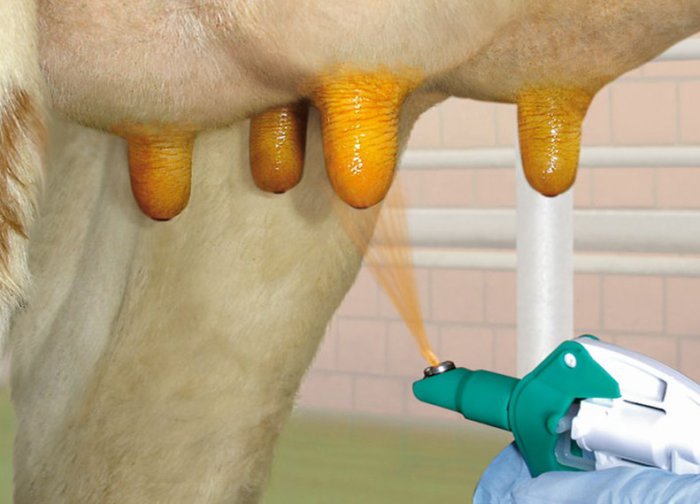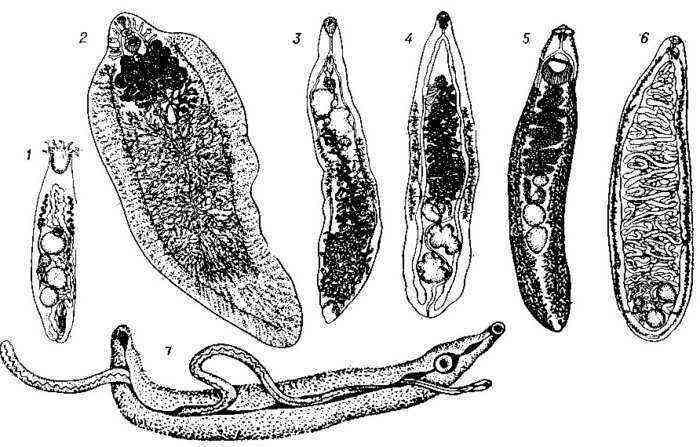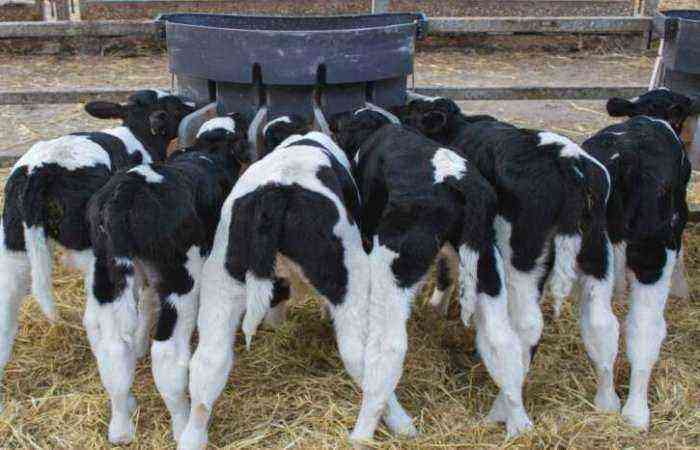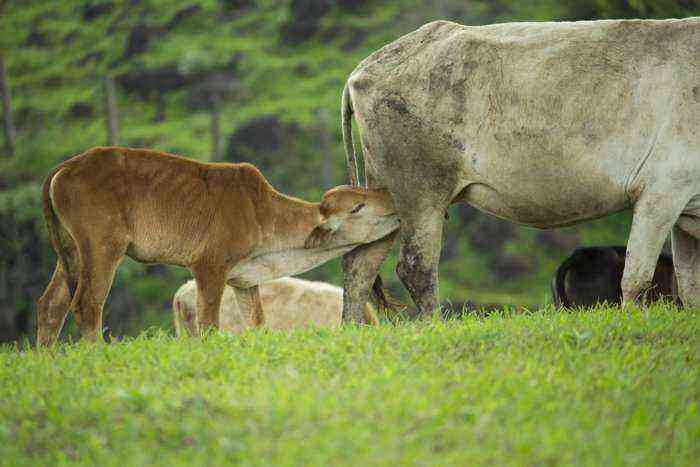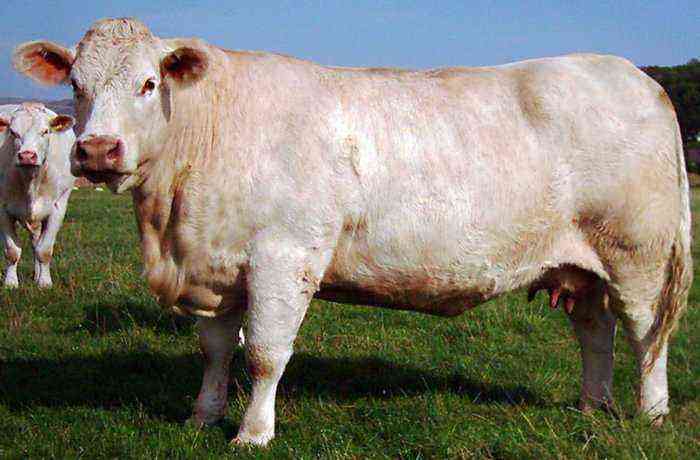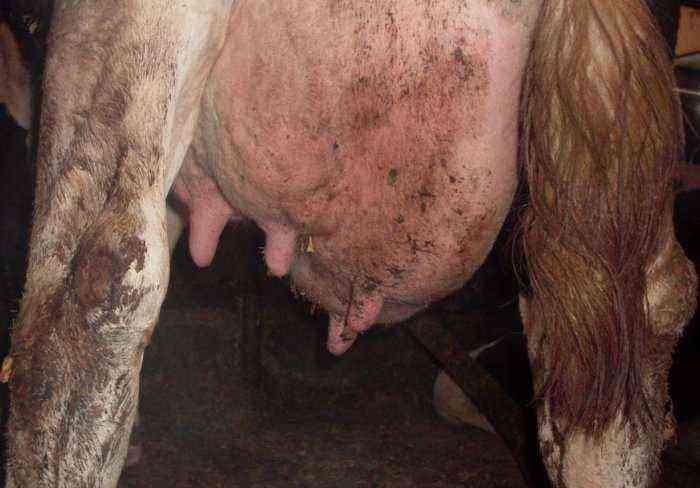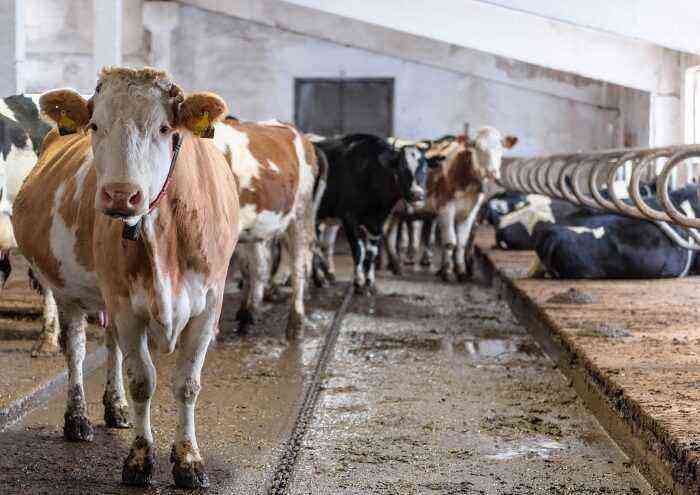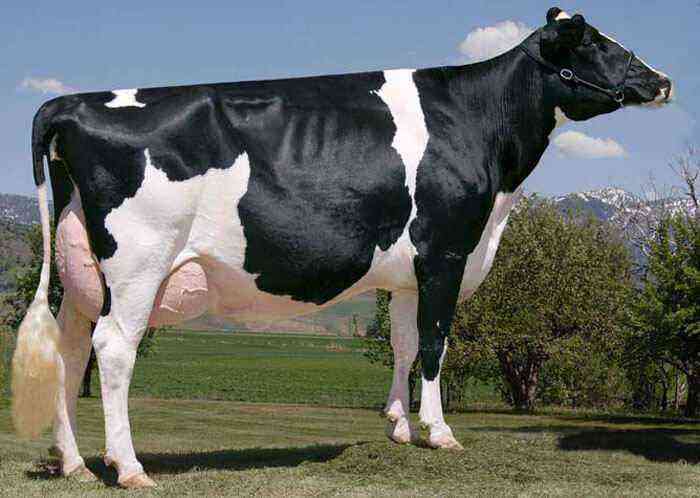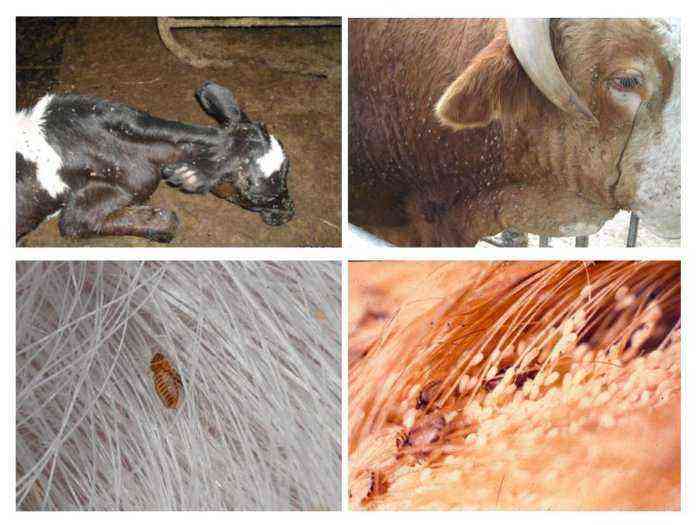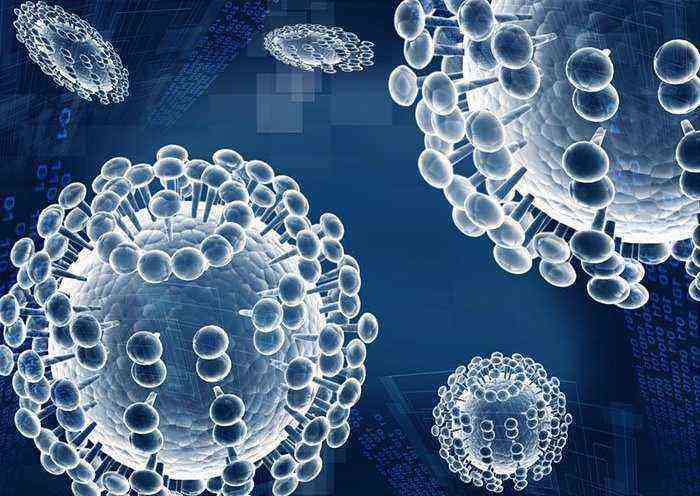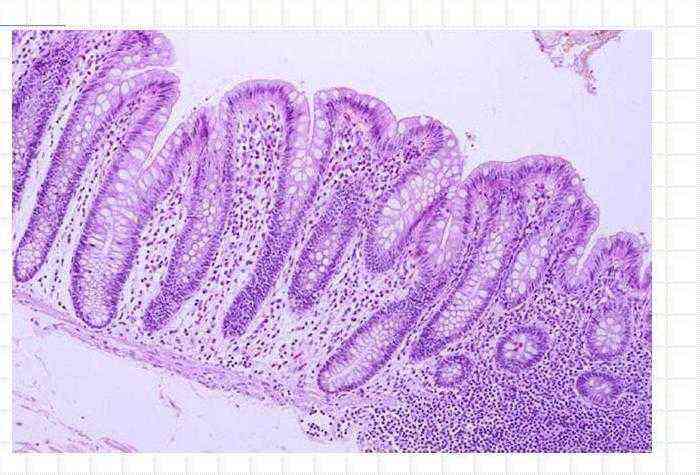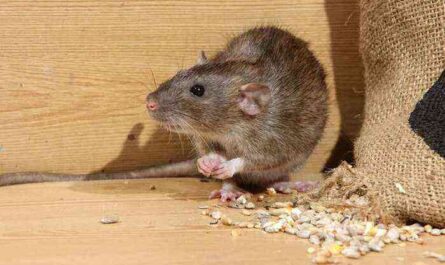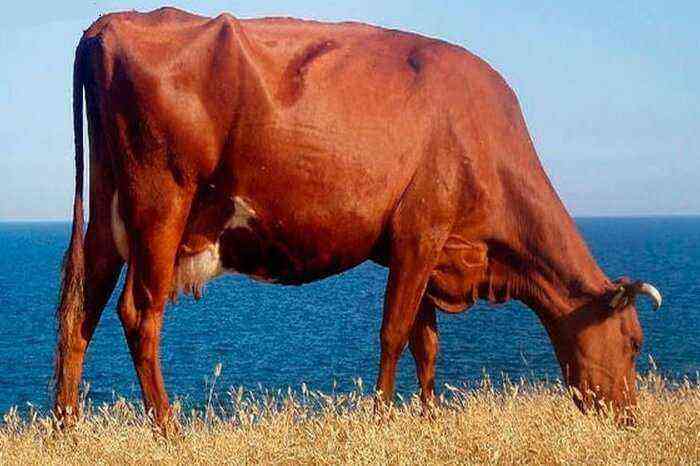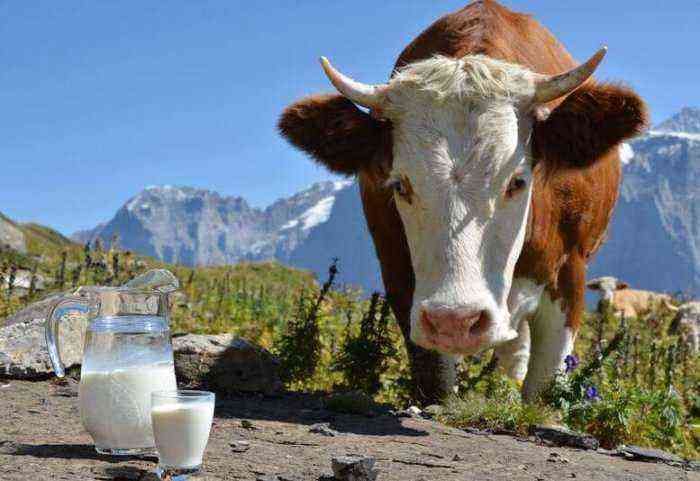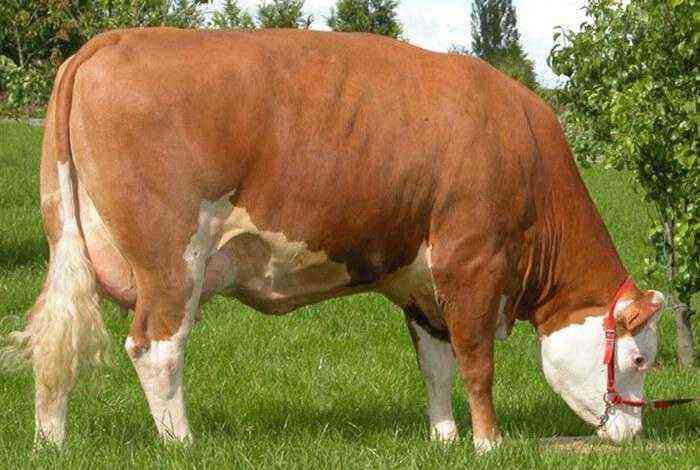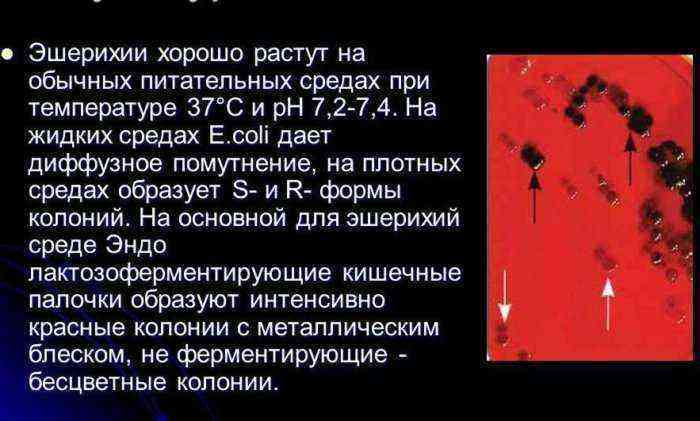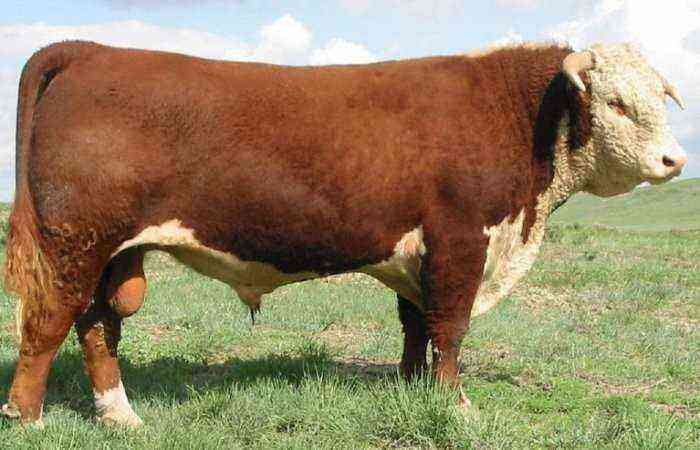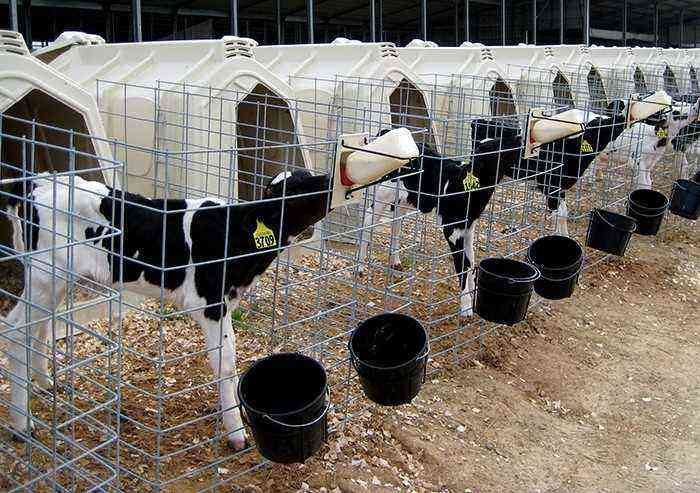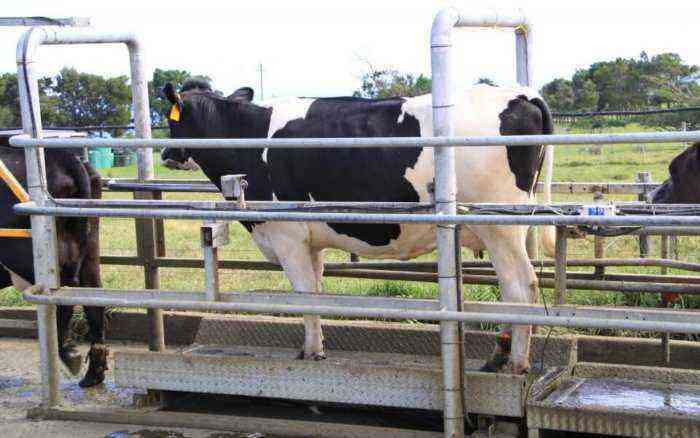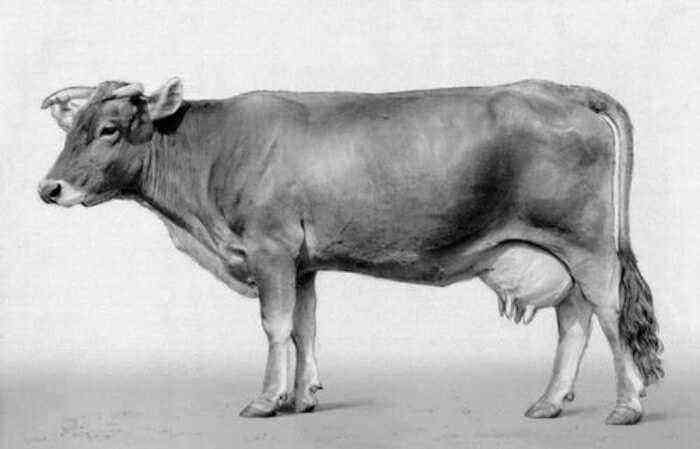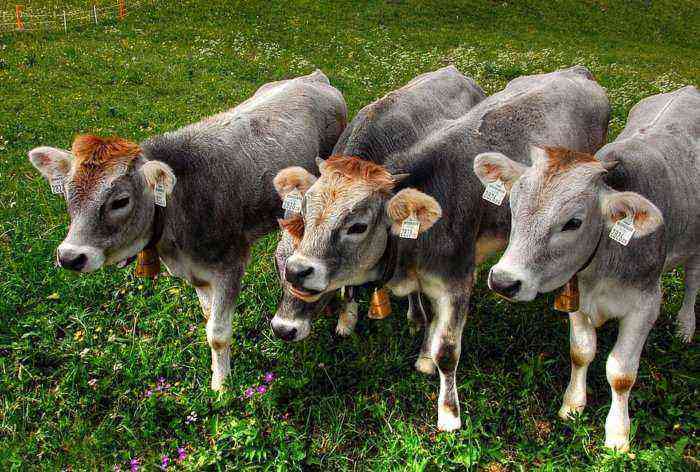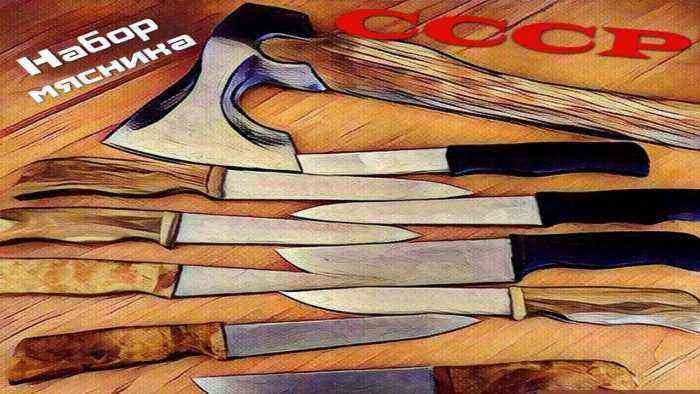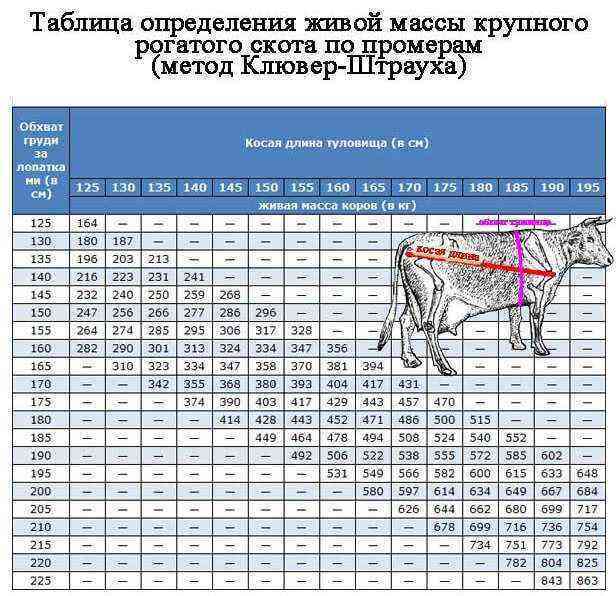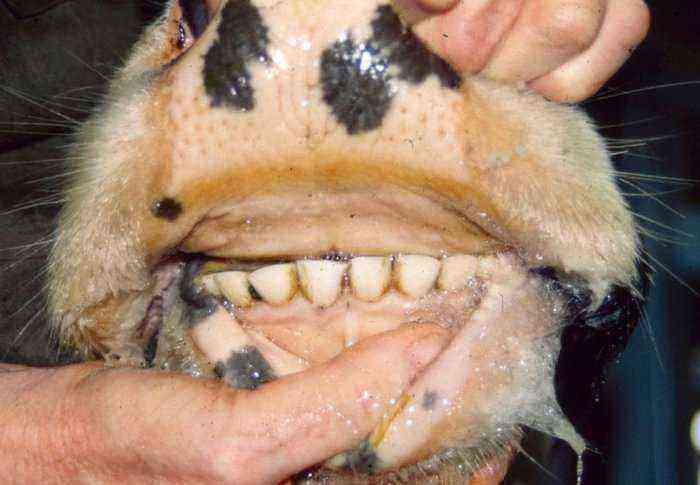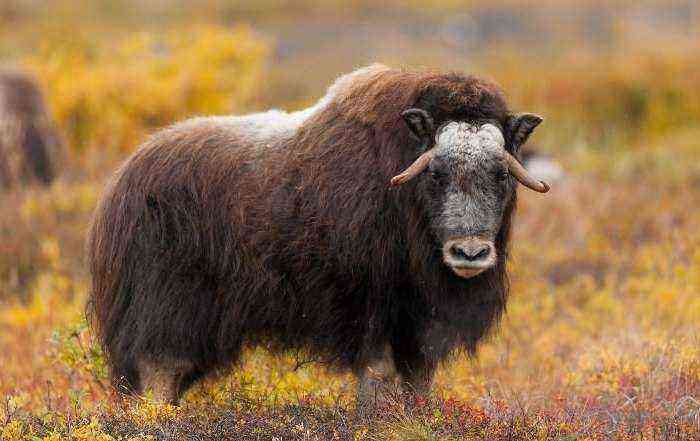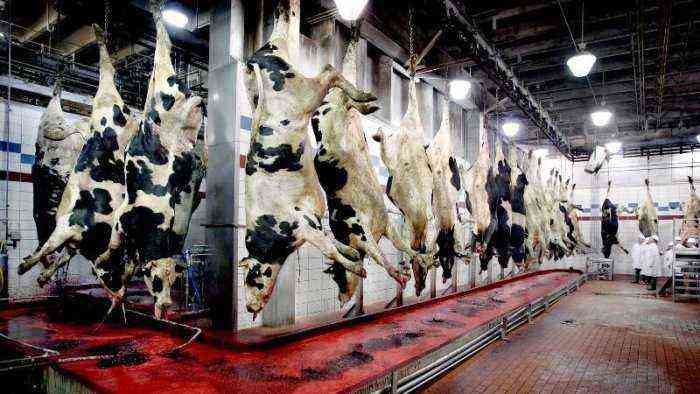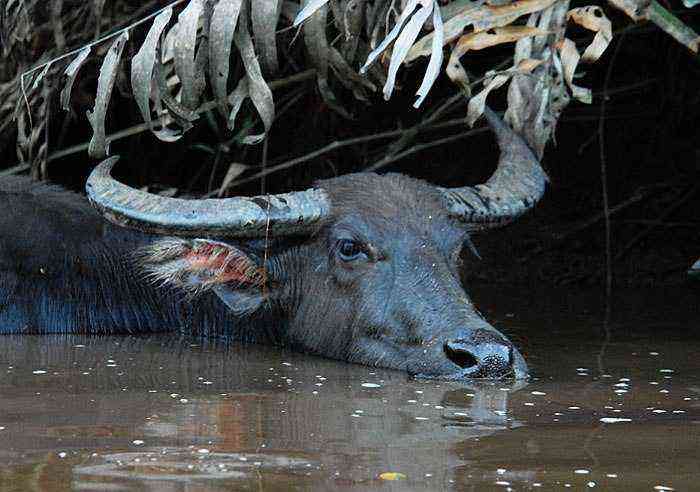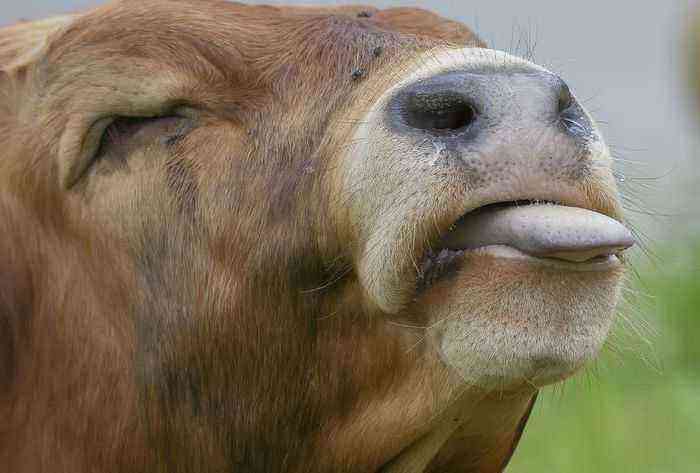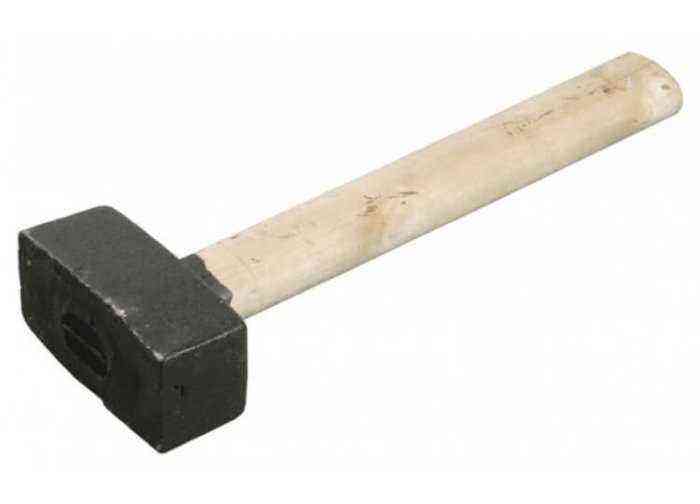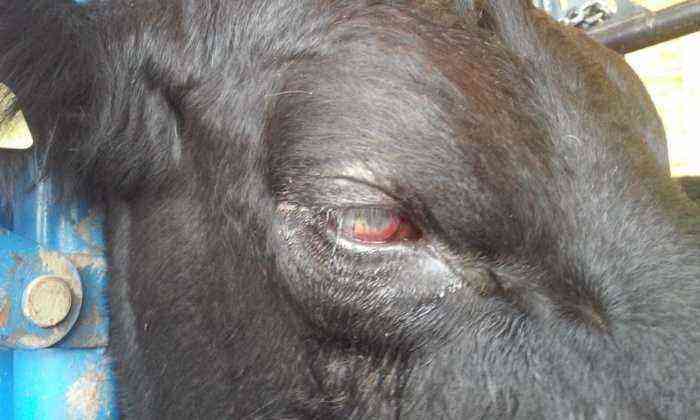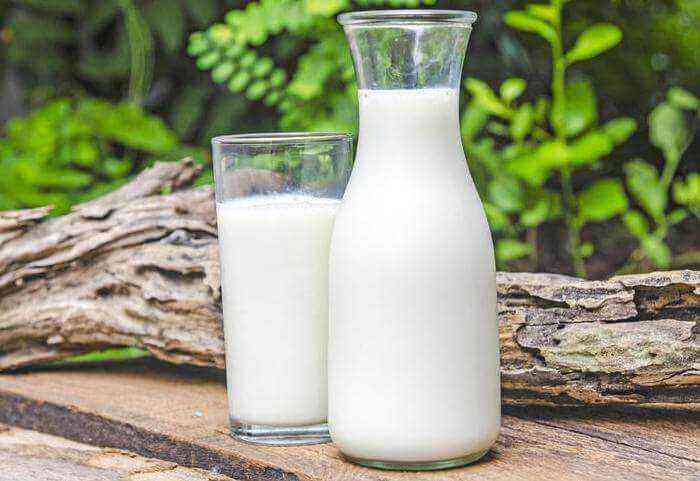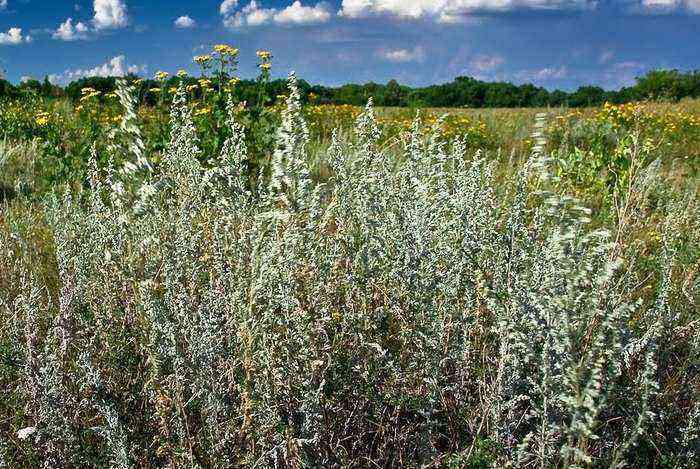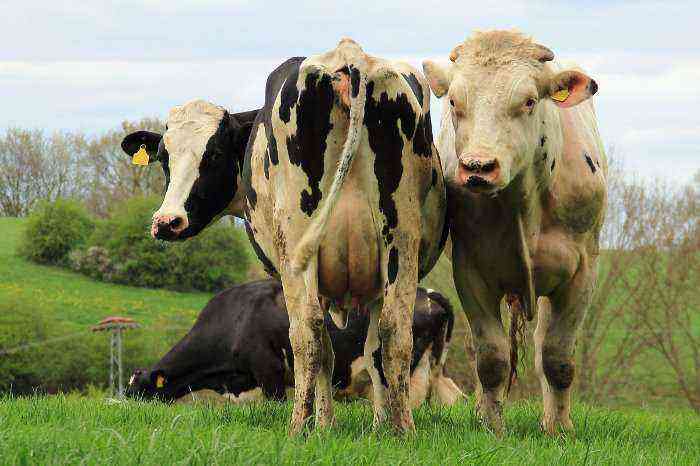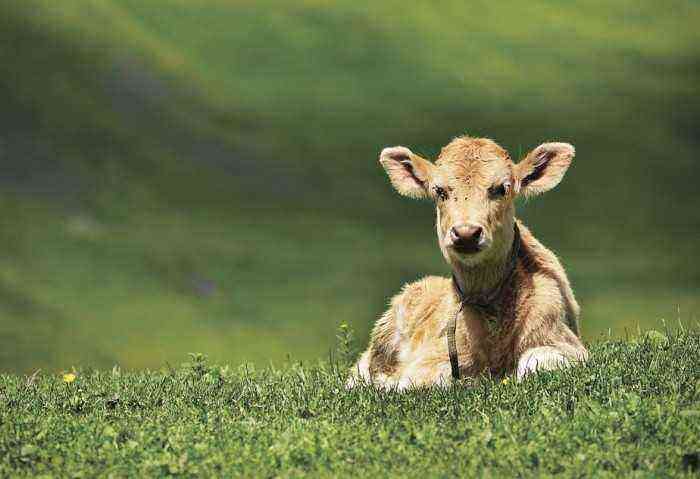The calving cow should be under the close attention of the farmer. She needs care, including good nutrition and proper living conditions, because after giving birth the animal is weakened. The farmer needs to know what is caring for a cow after calving, what complications can arise during this period, how and what to feed the cow and how to milk it. The health and productivity of the animal, and hence the potential profit, depend on the correctness of the actions.
Calving cow
Care after calving
As soon as the calf is born, a new stage begins, during which the farmer must not leave the cow. Consider the main tasks that lie ahead of him:
- Adopt a calf, bandage and cut the umbilical cord, treat it with iodine.
- Let the mother lick the baby.
- Give the calf a drink of colostrum within an hour of birth.
- Clean up dirt in the stall.
- Change pad.
- Wash the genital and belly organs of the cow with a solution of potassium permanganate.
Reference. At calving, it is advisable to collect the amniotic fluid of the cow in a clean bucket to give her to drink after the birth of the offspring. This fluid contains hormones and substances that will contribute to the release of the placenta.
Now the cow needs rest. Feeding her immediately after calving is not recommended, but drinking should not be limited, you need to replenish the volume of lost fluid. Experienced farmers do not recommend leaving the animal unattended until the afterbirth comes out. Control is necessary for two reasons:
- The placenta may not come out of the uterus.
- The afterbirth can be eaten by the cow.
Both situations pose a danger to the health of the cow, so it is important to make sure that the placenta came out and remove it. The placenta normally separates within 3-6 hours after calving, sometimes a little later.
Placenta
Feeding after calving
In the first two days after calving, the cow is not recommended to eat heavy food, otherwise she will have digestive problems. A few hours after the birth of the calf, the cow is offered good hay, let her eat plenty. You can give her a chatter of wheat bran. Juicy foods are initially limited so as not to provoke active milk production. If it arrives in large quantities, it is fraught with the development of stagnant processes in the udder.
On the third day, the cow continues to eat hay or fresh grass, and they also introduce a mash of oats and bran. Compound feed is allowed to be given from 3 days after calving, but not more than 2 kilograms. Then daily increase their number by 300-500 grams. Approximately 3-4 days root crops are introduced. 10 days after calving, it is necessary to come to a full diet. In the future, the task of the farmer is to increase milk production. The nutrition of the cow should be such that it gives the maximum amount of milk and at the same time does not lose weight. The amount of concentrates in the diet is gradually increased until it becomes obvious that the cow is producing the maximum amount of milk. As a result, at milking, the proportion of concentrates and bulky feeds as a percentage should be 40:60. If the cow gives a lot of milk, but at the same time loses weight, the amount of concentrates is increased to 50-55%.
Reference. The highest milk yields are observed in cows within 70-100 days after calving. Then the productivity decreases, because part of the nutrients is spent on the development of the fetus in the womb.
Diseases after calving
If a cow does not have an appetite after calving, this may indicate a deterioration in her health. In the postpartum period, complications and various diseases often develop:
- Detention of the placenta.
- Deposit.
- Paresis.
Paresis
The farmer must carefully monitor the condition of the calving cow so as not to lose sight of the alarming symptoms of the disease. All these conditions are extremely dangerous and, if left untreated, lead to the death of the animal.
Detention of the afterbirth
The afterbirth usually leaves the birth canal within 3-6 hours after calving. It is important to wait until this happens. If the placenta has not separated after 8 hours, they talk about its delay.
Attention! If you suspect a retention of the placenta, you should immediately contact the veterinary service. Otherwise, it will begin to decompose in the birth canal, which will eventually lead to sepsis.
Signs of retained placenta:
- The cow arches her back, raises her tail, pushes, trying to push out the placenta.
- The cow is losing her appetite.
- With partial retention of the placenta, part of its tissues protrudes out of the vagina.
If more than a day has passed after calving, and the afterbirth has not come out, the condition of the cow gradually worsens – she does not eat, the temperature rises due to inflammation, pus may be released from the vagina.
With this pathology, the veterinarian recommends injections of oxytocin, a saline solution is injected into the uterus. If therapy fails, the placenta is removed manually, after which a course of antibiotics is prescribed to prevent the development of sepsis.
Reference. Late appeal to the veterinary service leads to necrosis of the tissues of the uterus, which is why this organ has to be removed surgically.
accumulation
The inability to rise to its feet after calving is called laying down. The animal first tries to get up, but then falls. Soon the cow no longer makes any effort to get up. She constantly lies, if no measures are taken, bedsores form, her health deteriorates. Reasons for laying down after calving:
Laying down in cows
- Poor nutrition during pregnancy.
- Injuries of the pelvic bones during childbirth.
- Pinching of the sciatic or obturator nerve.
- Sprain of the ligaments connecting the sacrum and pelvis.
- Inflammatory process in the muscles of the limbs or pelvis.
The diagnosis is made after examining the cow. Treatment is aimed at eliminating the cause of this condition. It is important to provide the cow with peace and acceptable conditions of detention. The bedding should be soft. The cow should be turned over periodically to avoid bedsores, as well as massaging her body to improve blood circulation.
Paresis
Postpartum paresis is called hypocalcemia, which develops during childbirth. In the blood of a cow, the level of calcium decreases sharply, as a result of which its condition worsens. Paresis symptoms:
- Shaky gait.
- Convulsions.
- Paralysis, loss of sensation.
- The pupils are usually dilated.
- The cow’s gaze is not focused.
- The neck is curved.
- There is no intestinal peristalsis.
- The tongue falls out of the mouth.
Treatment includes the administration of calcium and magnesium supplements. As soon as the level of these substances in the blood returns to normal, the cow will feel better.
Reference. Postpartum paresis is more common in highly productive cows that have already calved more than once.
Milk the cow
The first milking after calving is done in about an hour. In this case, it is desirable to express not all of the colostrum, but only part of it. This will prevent the development of hypocalcemia in animals prone to the disease. The first colostrum is given to the calf. The next time the baby is fed after 5-6 hours.
In the first few days after birth, the cow should be milked at least 4-5 times a day at regular intervals. Before each milking, be sure to wash the udder with warm water and do a massage. This will avoid stagnation of milk and prevent the development of mastitis.
Attention! If the cow has a swollen udder, you should reduce the amount of concentrates and drink and increase the frequency of pumping milk.
By the tenth day after calving, they gradually switch to three times a day milking, and then to two times a day, when the cow begins to consistently produce at least 10 liters of milk per day. In the postpartum period, special attention is paid to udder hygiene.. At this time, the animal’s immune system is greatly weakened, and the inflamed mammary gland is susceptible to attack by bacteria.
Careful udder care
Careful udder care includes washing the teats with warm water and soap, treating them with an emollient ointment or cream, and massage. It is equally important to keep the bedding clean. Various contaminants can easily penetrate the milk ducts and provoke an inflammatory process.
The birth of a calf is a joy for a farmer, but it is also a huge responsibility. The cow and her offspring need careful care and attention. It is necessary to pay attention to any signs of malaise and report it to the veterinarian in time to avoid serious problems with the health of animals. It is important to properly feed the cow and distribute it. Then in the future she will begin to give the maximum amount of milk for several months after calving.
